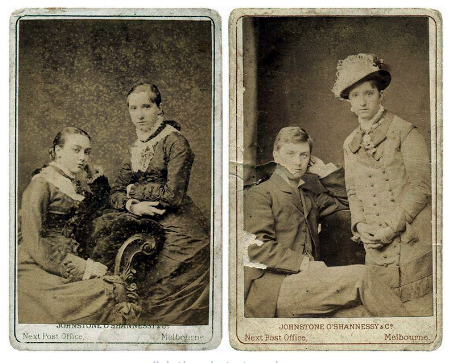Learn about antiques and collectables...
Click on a category below to show all the entries for that category.
Learn about and understand the items, manufacturers, designers and periods as well as the specialist terms used in describing antiques and collectables. Either click one of the letters below to list the items beginning with that letter, or click on a category on the left side of the screen to list the items under that category.
carte de visite
The carte de visite was a standard size small albumen photograph, that when mounted on a thicker paper card, measured 2.5 inches (64mm) by 4 inches (100mm).
The advantage over previous methods of photographic reproduction that allowed for only a single reproduction at a time, was that the inventor, Frenchman Adolphe Disderi had patented a photographic method in 1854 using the 'multiplying camera-obscura', that took multiple separate negatives on a single plate thus reducing production costs. Later versions of this camera took 8 and then 12 negatives on a single plate.
The format and cheaper cost meant that for the first time it was economical for relatives and friends to exchange portraits either by hand or by post, no matter where they were located, and from about 1859 their use spread from Paris to other areas of Europe and the Americas.
The popularity of the carte de visite was enhanced through their use by the ruling classes. In 1859 in France photographs of the Emperor Napoleon by the inventor of the carte de visite, Disden, made the first more popular, and the second famous. In England in 1860, a set of 14 portraits of the Royal Family, comprising Queen Victoria, Prince Albert and their children bound into a Royal Album was an immediate success, and hundreds of thousands were sold. During the Civil War in America photos of Abraham Lincoln, Ulysses S. Grant, and other celebrities of the era were instant hit in the North..
Most cartes de visite depict individuals or groups in a studio setting, although some landscape examples do exist.
However the era of the carte de visite was short-lived. After the peak period of popularity between 1863 and 1877, production waned. Other types of photographs, such as the larger cabinet card slowly replaced the carte de visit as the preferred method of recording family portraits. Both the carte de visite and cabinet card became redundant with the invention of the Brownie camera by Kodak in the 20th century, and the services of a professional photographer were no longer required to produce a photograph.
